10 Incredibly Rare Sharks You’ve Probably Never Heard Of Them
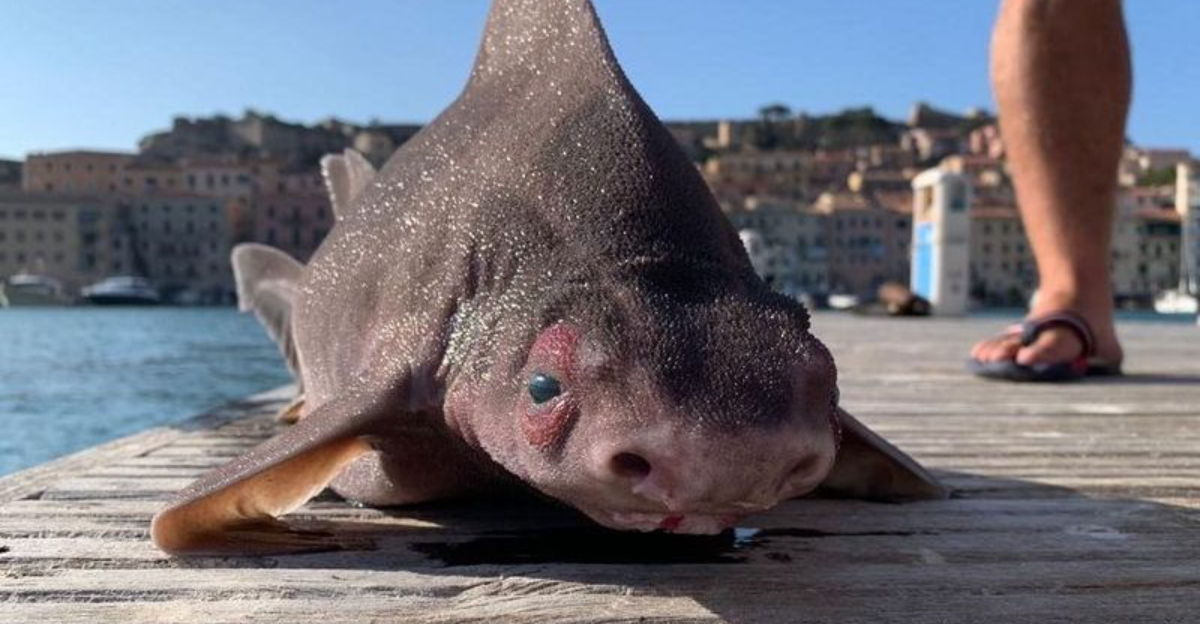
The ocean holds mysteries we’re still discovering, with some of the most fascinating being rare shark species that swim far from human eyes. While great whites and hammerheads get all the fame, hundreds of lesser-known shark species exist in the depths.
Some are so elusive that scientists have only spotted them a handful of times throughout history. Let’s explore ten incredibly rare sharks that showcase nature’s amazing diversity.
1. Megamouth Shark
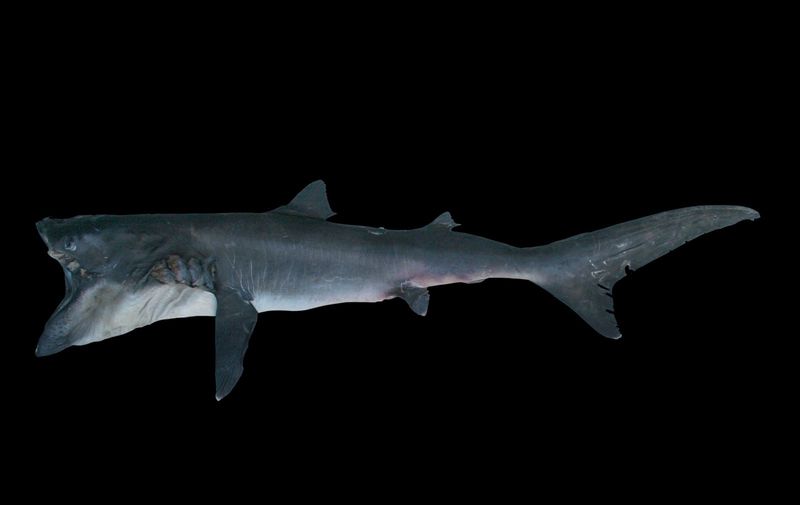
Imagine a shark with a mouth so huge it could almost swallow you whole, yet it feeds primarily on tiny plankton. The Megamouth was only discovered in 1976 when one accidentally got tangled in a Navy ship’s anchor off Hawaii.
Scientists have recorded fewer than 100 sightings since its discovery, making it one of the most elusive large marine animals. Growing up to 18 feet long, these gentle giants swim with their cavernous mouths open to filter food.
Their dark, rubbery skin and rounded snout give them an almost prehistoric appearance, like a living fossil from another time.
2. Goblin Shark
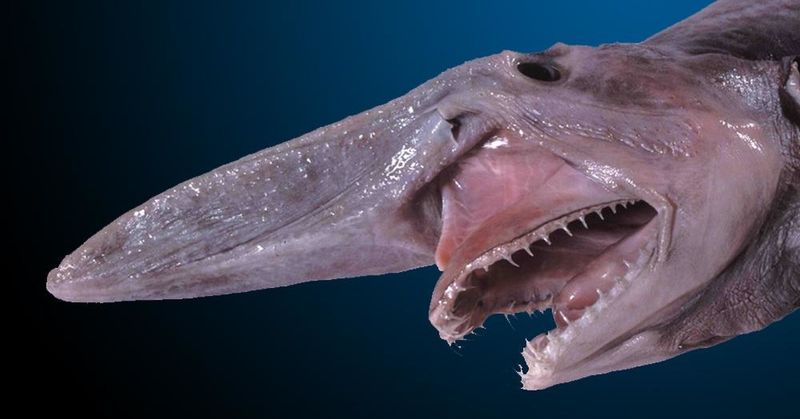
With a face only a mother could love, the Goblin shark sports a bizarre sword-like snout and jaws that literally shoot forward to capture prey. Pink-skinned and flabby-bodied, these deep-sea nightmares typically live at depths of 4,000 feet where sunlight never reaches.
First discovered off Japan in 1898, scientists have found fewer than 50 specimens worldwide. Their strange appearance earned them the Japanese nickname “tenguzame” after a mythical long-nosed goblin.
When feeding, their jaws extend almost like an alien creature from a sci-fi movie, making them one of the ocean’s most unusual predators.
3. Frilled Shark
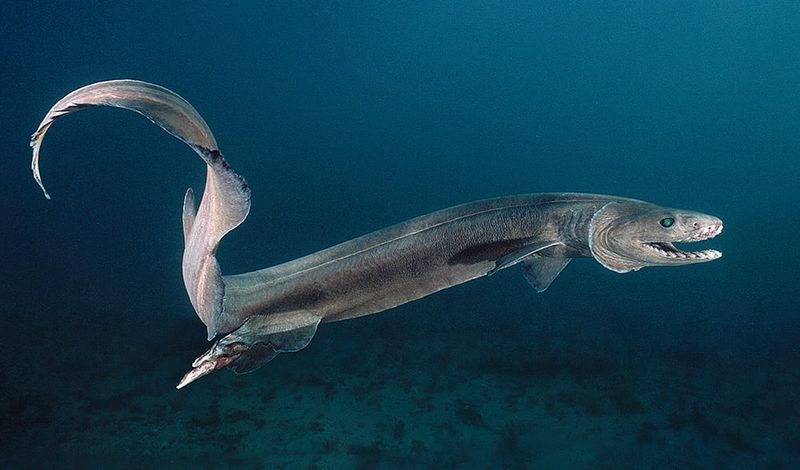
Looking like it swam straight out of prehistoric times, the Frilled shark remains virtually unchanged for 80 million years. Its snake-like body and 300 needle-sharp teeth arranged in 25 rows create a truly intimidating appearance.
Named for the frilly appearance of their six gill slits, these living fossils typically stay in deep waters between 390 and 4,200 feet. Scientists rarely spot them alive, as they prefer the darkness of the ocean depths.
When they do appear near the surface, it’s often because they’re sick or dying, which adds to their mysterious nature and rarity in scientific records.
4. Pocket Shark
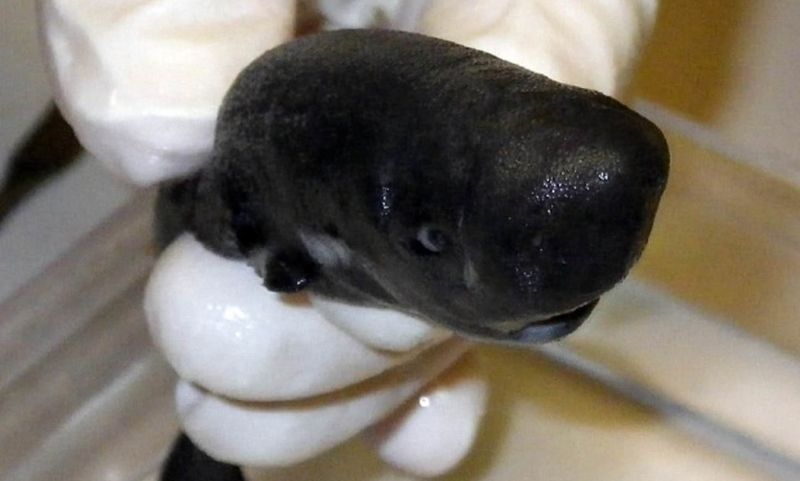
Small enough to fit in your pocket (though you definitely shouldn’t try), the Pocket shark is among the tiniest shark species ever discovered. Only two specimens have ever been found – one off Chile in 1979 and another in the Gulf of Mexico in 2010.
At just 5.5 inches long, what makes this miniature marvel truly special is a mysterious pocket-like opening near its gills. Scientists believe this pocket produces a glowing fluid that helps attract prey or mates in the darkness of the deep ocean.
Despite its small size, the discovery of this species shows how much remains unknown in our oceans.
5. Viper Dogfish
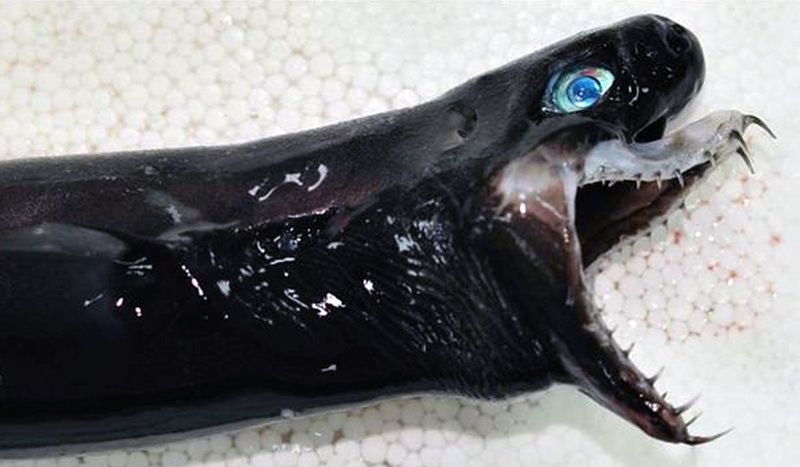
The Viper Dogfish combines the worst nightmares of snake and shark fears into one terrifying package. Discovered in 1986 off Japan, fewer than 70 specimens have ever been documented.
Their extendable jaws filled with needle-like teeth can swing forward to snatch prey, similar to how a viper strikes. These black-bodied hunters grow to only about 20 inches long but make up for their small size with specialized light-producing organs called photophores.
These bioluminescent spots likely help them communicate, attract prey, or find mates in their home territory 1,000 feet below the surface where darkness is absolute.
6. Angular Roughshark
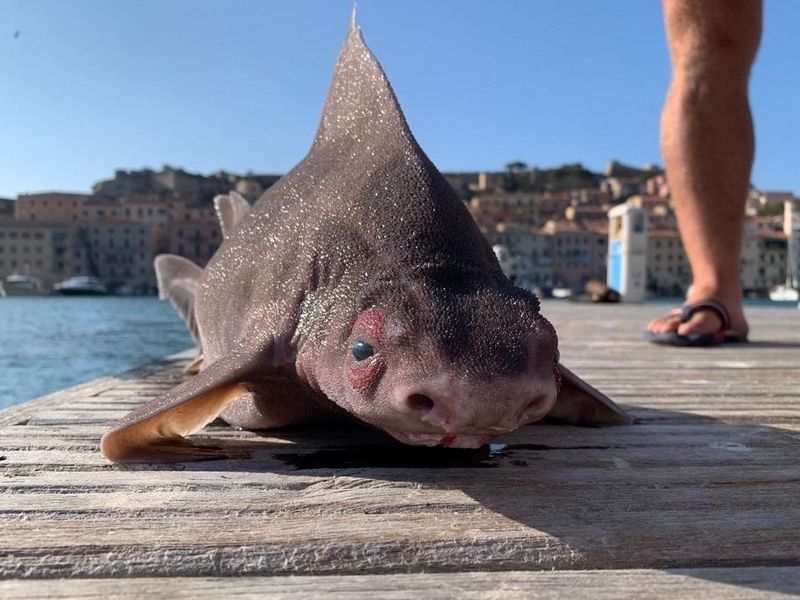
With a face that looks permanently grumpy, the Angular Roughshark has earned the nickname “pig-face shark” from fishermen in the Mediterranean. Its stout body, flat head, and prominent ridges above the eyes give it a perpetually disapproving expression.
Unlike most rare sharks that live in extreme depths, these odd-looking creatures inhabit moderate depths of 200-2,300 feet. Their skin is covered in dermal denticles so rough that historical fishermen once used it as sandpaper.
Though not as mysterious as some deep-sea species, their numbers have declined dramatically due to commercial fishing bycatch, making sightings increasingly rare.
7. Ghost Shark
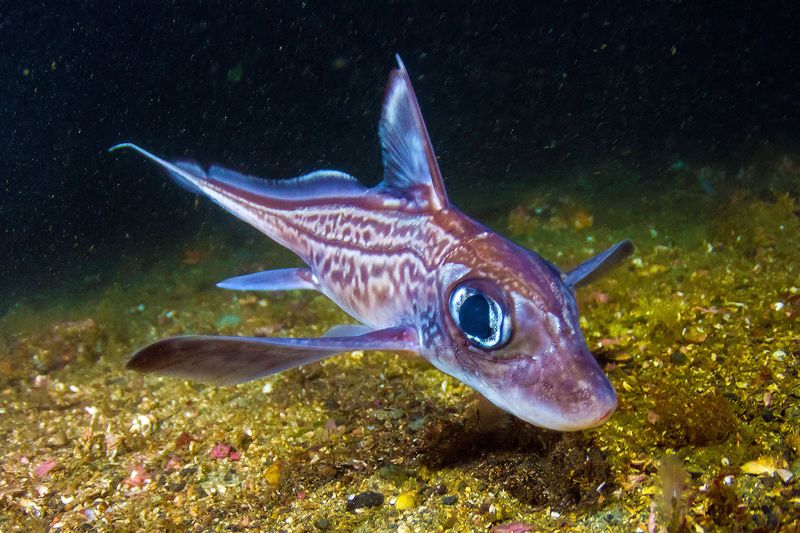
The Ghost Shark isn’t actually a true shark but belongs to a mysterious ancient group called chimaeras that branched off from sharks nearly 400 million years ago. Also known as ratfish or spookfish, they have smooth, ghost-white bodies and large green eyes that seem to glow in the dark.
Males possess a strange retractable club-like organ on their heads used to grasp females during mating. Until recently, scientists could only study dead specimens, but advances in deep-sea technology have finally allowed glimpses of these ethereal creatures alive in their natural habitat.
They use specialized sensing canals on their faces to detect prey hiding in the seafloor mud.
8. Sawshark
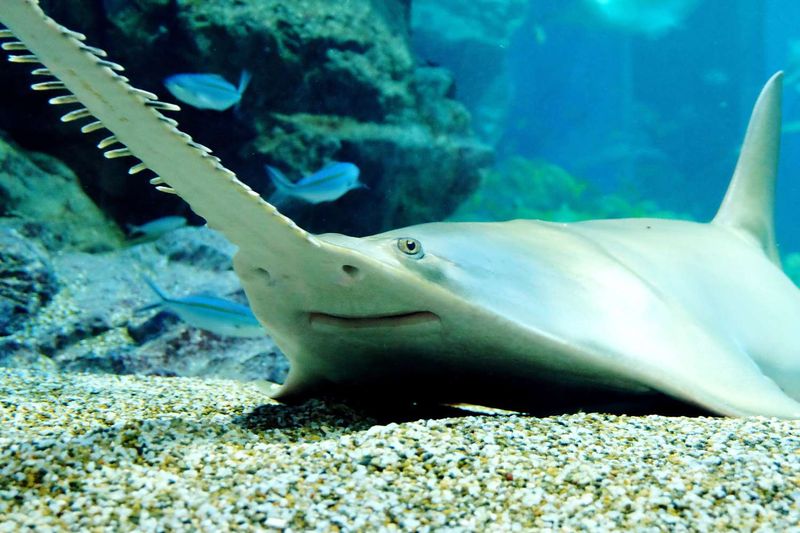
With their long, flattened snouts lined with sharp, tooth-like structures, sawsharks look like something out of a deep-sea sci-fi film. These elusive predators use their saw-like rostrum to slash through schools of fish or disturb prey hiding in the sand.
Found in deep and often murky waters off the coasts of Australia, Japan, and Madagascar, sawsharks remain rarely seen by humans.
Unlike sawfish, which they’re often confused with, sawsharks are true sharks – with gills on the sides of their heads and barbels that help them detect movement on the ocean floor.
9. Ornate Wobbegong
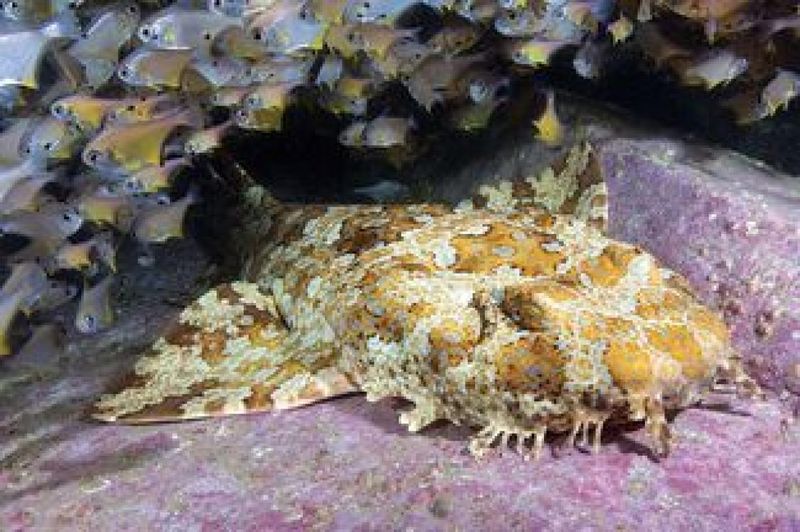
Master of disguise rather than speed, the Ornate Wobbegong looks more like a piece of coral-covered seafloor than a predatory shark. Their flattened bodies come covered in an intricate pattern of spots, swirls, and saddles that perfectly mimic the reef environments they call home.
Fringed facial lobes around their mouths enhance the camouflage while also acting as lures for curious fish. Rather than chasing prey, these patient ambush predators lie motionless for days, waiting for something edible to swim too close.
Found primarily in shallow waters around Australia and Indonesia, habitat destruction and their slow reproductive rate have made encounters increasingly rare.
10. Daggernose Shark
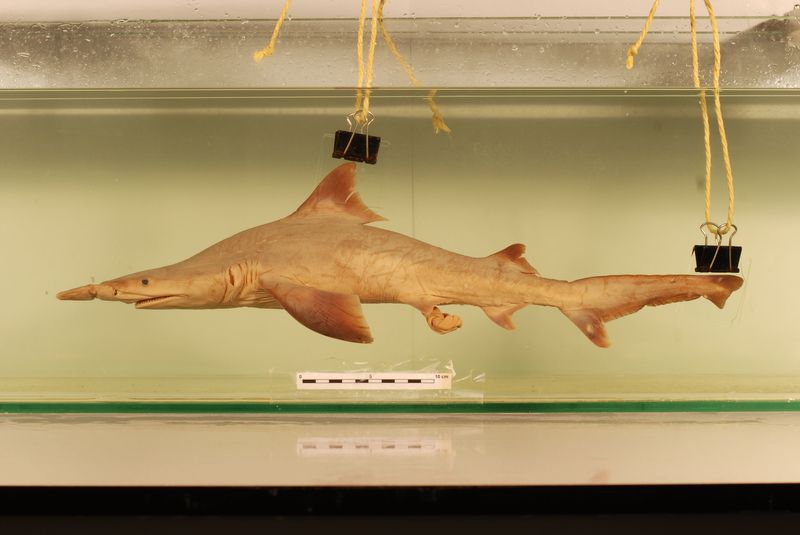
Racing toward extinction, the Daggernose shark might disappear before most people even learn it exists. Named for its pointed snout that resembles a dagger, these slim-bodied sharks once inhabited the tropical coastal waters of South America.
Unlike most rare sharks that live in inaccessible depths, Daggernose sharks swim in shallow, muddy waters close to shore. Their population has collapsed by over 90% in recent decades due to fishing pressure and habitat loss.
Scientists estimate fewer than 250 mature individuals might remain in the wild, making them critically endangered and possibly the rarest shark on our list.






